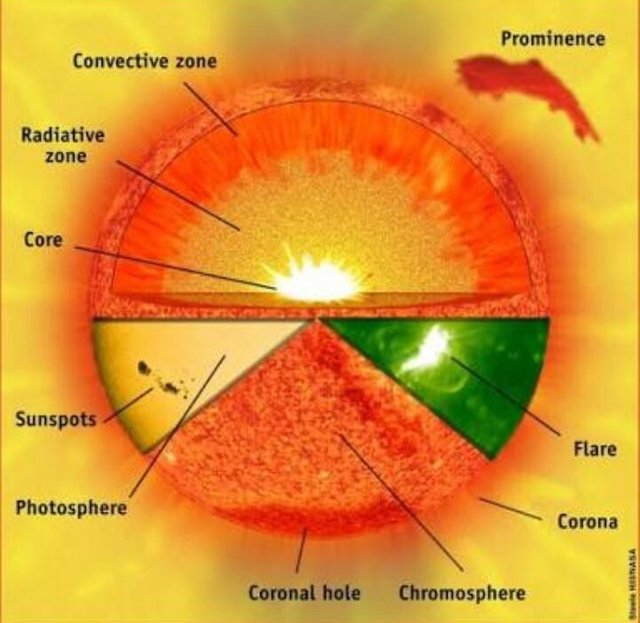##FUNDAMENTALS OF SOLAR PHYSICS##
##THE SUN##
The sun is a sphere of intensely hot gaseous matter with a diameter of 1.39×109m and is, on the average, 1.5×1011m from the earth. As seen from the earth, the sun rotates on its axis about once every 4 weeks. However, it does not rotates as a solid body; the equator takes about 27 days and the polar regions take about 30 days for each rotation. The sun has an effective blackbody temperature of 5777k.1 The temperature in the central interior regions is variously estimated at 8×106 to 40 ×106k and the density is estimated to be about 100 times that of water. The sun is, in effect, a continuous fusion reactor with its constituent gases as the ''containing vessel'' retain by gravitation forces. Several fusion reactions have been suggested to supply the energy radiated by the sun. The one considered the most important is a process in which hydrogen (i.e., four protons) combines to form helium (i.e., one helium nucleus); the mass of the helium nucleus is less than that of four protons, mass having been lost in the reaction and converted to energy. The energy produced in the interior of the solar sphere at temperature of many millions of degrees must be transfered out to the surface and then be radiated into space. A succession of radiative and convective processes occur with successive emission, absorption, and radiation; the radiation in the sun's core is in the X-ray and gamma-ray parts of the spectrum, with the wa wavelength of the radition increasing as the temperature drops at larger radial distances!!!
